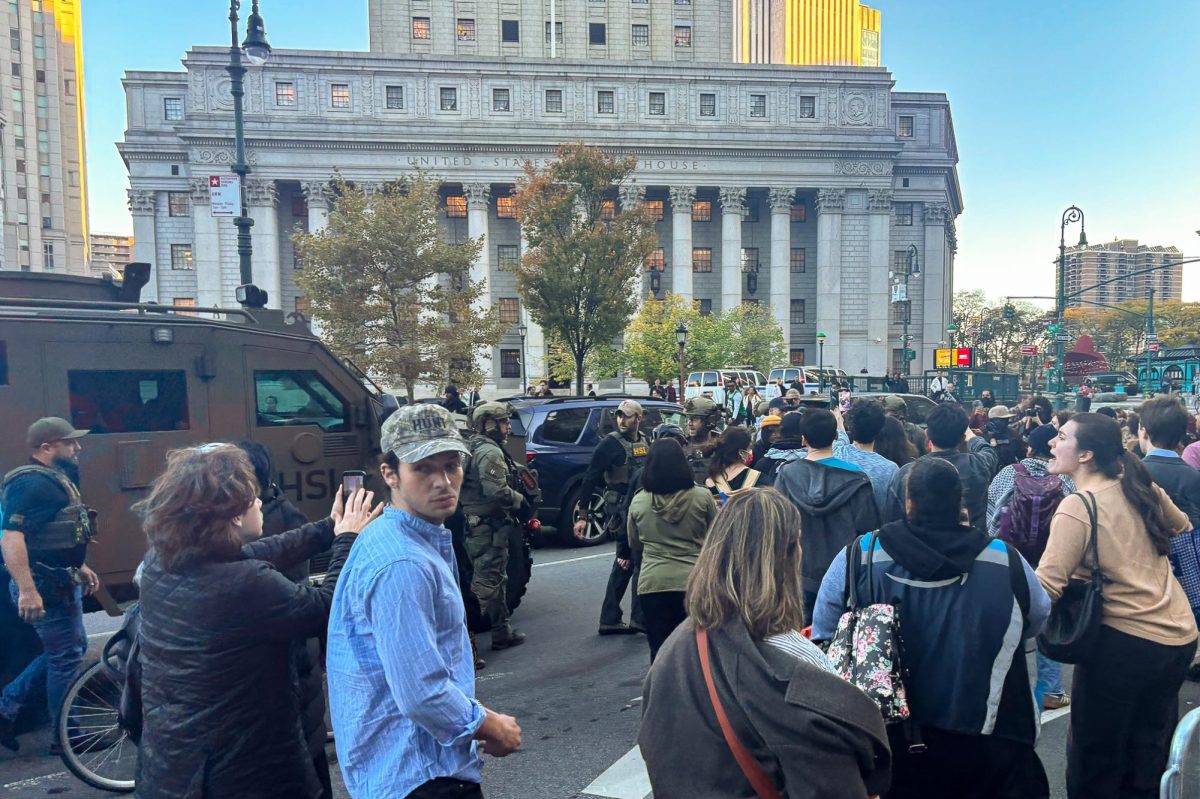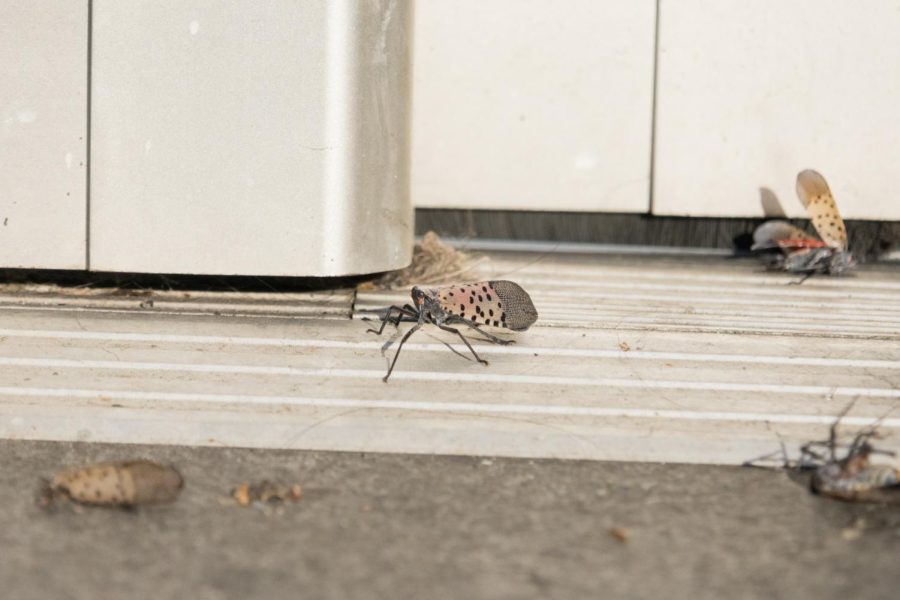Invasive lanternflies have arrived in Washington Square
The invasive insects, which have been spotted by students across the city, spread easily and can be harmful to trees and other wildlife. New Yorkers have been instructed to crush them.
NYU students have begun to spot lanternflies around campus. (Alex Tey for WSN)
September 15, 2022
Spotted lanternflies, an invasive species that has multiplied across New York City, are putting many of the city’s plants at risk. The insects have been spotted in parks near campus — including Washington Square Park, Union Square Park and Stuyvesant Square Park — as well as on sidewalks and streets nearby. The New York City Department of Parks & Recreation encourages New Yorkers to squish the bugs to reduce their spread.
Many students have seen the insects, which are a potential threat to thousands of trees in the area. Spotted lanternflies consume plant sap and then excrete it, leaving a sediment called honeydew on tree bark and other surfaces. The loss of sap caused by the insects combined with the presence of honeydew makes mold growth more likely, weakening trees.
Gallatin first-year Alison Argueta said that she has seen the insects in Washington Square Park, but that they can be difficult to step on because they move around so much.
“I heard somebody a few weeks ago tell me their method,” Argueta said. “They’ll let them hop around for a bit so they’ll get tired and then you just kill them. You have to kill them straight on, their eyes are facing you and boom.”
The insects first appeared in New York in August 2020, and have since spread to 15 New York counties and 14 other states. They are primarily harmful to crops like grapes, apples and blueberries, and have caused crop loss and other issues in the agricultural industry.
Krystal Dixon, who works for Cornell University’s New York State Integrated Pest Management, said that while the species is mostly causing issues for the state’s grape industry, it also infests other plants and trees. New York City’s climate varies from warm and wet summers to cold and snowy winters, and extreme weather has impacted residents in recent years — including Hurricane Ida in September of last year. Dixon said these weather conditions may put wildlife in the city at a higher risk for spotted lanternfly damage, as trees that have been damaged by frost or rainfall are more easily damaged by the insects’ activity.
“They’re a big stressor for trees,” Dixon said. “They specifically won’t kill the tree on their own, but if weather or something else happens, the added stress of spotted lanternflies can contribute to death with these trees.”
The parks department’s is not currently considering any widespread treatment, such as pesticide use, to control the spotted lanternfly population, according to Dan Kastanis, a department spokesperson. Kastanis said this was due to the cost and the potential harm to surrounding ecosystems that a treatment of that nature may cause.
Brian Eshenaur, a specialist from Cornell University’s integrated pest management program, which develops environmentally friendly pest control methods, noted that the insects can often be found along city streets and sidewalks, and tend to confuse buildings with trees and gather near them.
“We’re finding out that the spotted lanternfly can only live for about two days without feeding on a tree,” Eshenaur said. “This isn’t an insect that will become a problem in our structures, in our apartments, our houses — they’re just not going to be able to survive indoors without access to trees. In some cases, they starve themselves because in an urban environment they can’t find their way to a tree that they can feed on.”
The insect’s eggs can spread by attaching to clothing, vehicles and other belongings. Eshenaur said that people traveling from infested areas should check to see if the eggs, which can often be spotted in clumps on tree bark, are on any of their items and remove them. In addition to killing the insects themselves, people are also encouraged to destroy egg masses that have been laid by the insects by scraping them off of surfaces they are attached to and placing them in soapy water or hand sanitizer.
Email Rylee La Testa at [email protected].
























































































































































